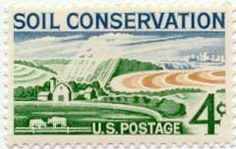There are concerns regarding the long-term environmental fate and environmental persistence of the widely used insecticide imidacloprid. The 2005 sales figures for insecticides in Germany show not only that imidacloprid is one of the most widely used active ingredients, but also that this compound is more toxic to honey bees, more persistent in soil with a higher leachability than most other insecticides used in that country. The neonicotinoid insecticides clothianidine and thiomethoxam have similarly unfavourable properties.
Download information on the environmental fate of imidacloprid:
http://www.cdpr.ca.gov/docs/emon/pubs/fatememo/imid.pdf
http://npic.orst.edu/factsheets/imidacloprid.pdf
http://ceqg-rcqe.ccme.ca/download/en/187/
http://www.ccme.ca/assets/pdf/imidacloprid_ssd_1388.pdf
2005 Insecticide sales (in tonnes) for Germany, honey bee LD50 (in nanogram, ng) in parentheses:
Dimethoate: 100 - 250 (120 ng, contact), non-persistent in soil, low leachability;
Methiocarb: 100 - 250 (230 ng, contact), non-persistent in soil, low leachability;
Imidacloprid: 25 - 100 (3,7 ng, oral), persistent in soil, high leachability;
Methamidophos: 25 - 100 (220 ng, oral), non-persistent in soil, transition state leachability;
lambda-Cyhalothrin: 25 - 100 (38 ng, contact), non-persistent in soil, low leachability;
Pirimicarb: 10 - 25 (4.000 ng, oral), moderately persistent in soil, transition state leachability;
Alpha-Cypermethrin: 10 - 25 (33 ng, contact), moderately persistent in soil, low leachability;
Beta-Cyfluthrin: 10 - 25 (1 ng, contact), non-persistent in soil, low leachability;
Delthamethrin: 2,5 - 10 (1,5 ng, contact), non-persistent in soil, low leachability;
Clothianidine: 2,5 - 10 (4 ng, oral), very persistent in soil, high leachability;
Thiacloprid: 2,5 - 10 (17.320 ng, oral), non-persistent in soil, low leachability;
Thiamethoxam : 2,5 - 10 (5 ng, oral), moderately persistent in soil, high leachability;
Dichlorvos: 2,5 - 10 (290 ng, oral), non-persistent in soil, low leachability;
Chlorfenvinphos: 2,5 - 10 (550 ng, oral), moderately persistent in soil, transition state leachability;
Pirimiphos-methyl: 2,5 - 10 (› 220 ng, oral), moderately persistent in soil, low leachability;
Fenoxycarb: 2,5 - 10 (› 204.000 ng, contact), non-persistent in soil, low leachability;,
Carbosulfan: 2,5 - 10 (180 ng, oral), non-persistent in soil, low leachability;
Tefluthrin: 2,5 - 10 (280 ng, oral), moderately persistent in soil, low leachability;
zeta-Cypermethrin: 2,5 - 10 (2 ng, contact), moderately persistent in soil, low leachability;
Chlorpyrifos: less than 1,0 (59 ng, contact), moderately persistent in soil, low leachability;
Lambda-Cyhalothrin: less than 1,0 (38 ng, contact), non-persistent in soil, low leachability.
Source:
http://www.bvl.bund.de/cln_027/nn_1248996/DE/04__Pflanzenschutzmittel/00...
Pesticide properties from IUPAC FOOTPRINT Pesticides Properties database:
http://sitem.herts.ac.uk/aeru/iupac/index.htm

- Login om te reageren
